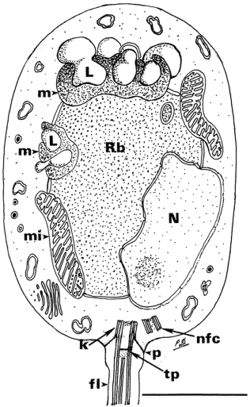Batrachochytrium dendrobatidis - The Link Between Climate Change and Amphibians
Introduction

By Scott Upton
Batrachochytrium dendrobatidis is a pathogen primarily found in amphibians, and it’s presence can have devastating effects on amphibian populations. Batrachochytrium dendrobatidis is responsible for causing Chytridiomycosis, or chytrid, in amphibians all across the world in response to rising global temperatures (Fig 1).[1]. Chytrid fungus thrives in rising temperatures, and it attacks the keratinized layer of the epidermis, causing it to thicken. This is devastating to the amphibian populations because they must keep their skin moist through mucous membranes in order to respirate properly.
My research question is: How does the fluctuation of temperatures across the globe affect the growth of Batrachochytrium dendrobatidis in amphibian populations, and how do amphibians combat this pathogen? Experiments have been conducted on how climate change correlates with chytrid fungus growth, and limited research has been done to show how these amphibians combat it. There is limited evidence that amphibians are able to avoid this pathogen, but there has been some research insinuating that amphibians may travel to deeper and cooler waters to potentially prevent the accessibility of Batrachochytrium dendrobatidis. Batrachochytrium dendrobatidis depletes amphibian populations across the globe, and it is very applicable to them and their environments. If the temperatures continue to rise, then this pathogen could run rampant through the amphibian populations leading to mass extinction.
Sample citations: [2]
[3]
A citation code consists of a hyperlinked reference within "ref" begin and end codes.
To repeat the citation for other statements, the reference needs to have a names: "<ref name=aa>"
The repeated citation works like this, with a back slash.[2]
Section 1
Include some current research, with at least one figure showing data.
Every point of information REQUIRES CITATION using the citation tool shown above.
Section 2
Include some current research, with at least one figure showing data.
Section 3
Include some current research, with at least one figure showing data.
Section 4
Conclusion
References
- ↑ 1.0 1.1 Berger et al. 2005. Life cycle stages of the amphibian chytrid Batrachochytrium dendrobatidis. Inter-Research. 68:52-63 Cite error: Invalid
<ref>tag; name "Berger2005" defined multiple times with different content - ↑ 2.0 2.1 Hodgkin, J. and Partridge, F.A. "Caenorhabditis elegans meets microsporidia: the nematode killers from Paris." 2008. PLoS Biology 6:2634-2637.
- ↑ Bartlett et al.: Oncolytic viruses as therapeutic cancer vaccines. Molecular Cancer 2013 12:103.
Authored for BIOL 238 Microbiology, taught by Joan Slonczewski, 2021, Kenyon College.
